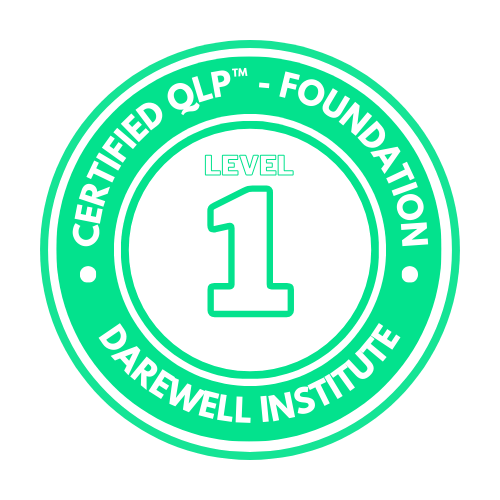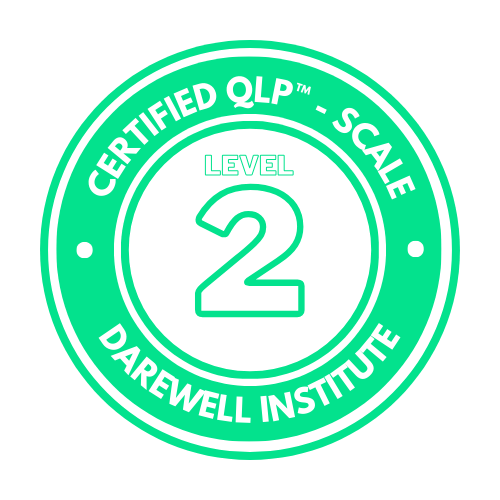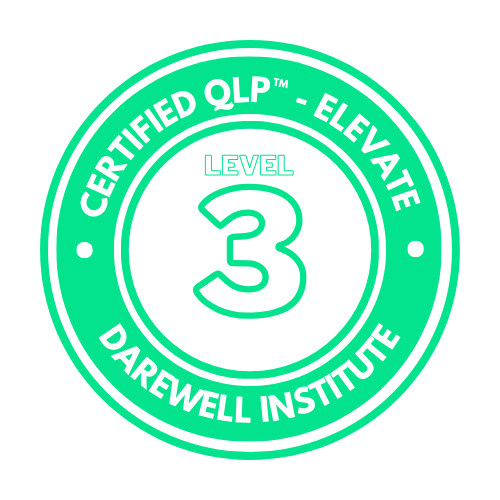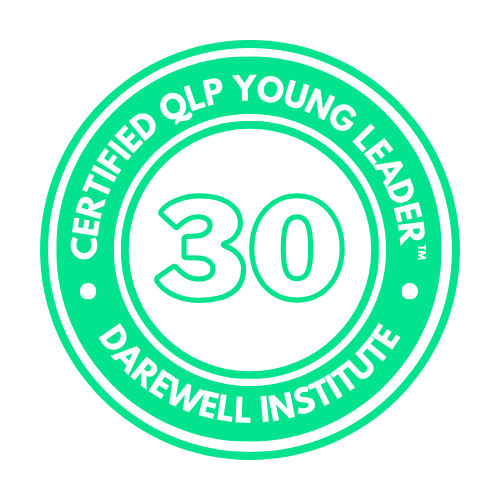Leadership Development Lessons from Meta: How to Scale, Simplify, and Lead Like a Tech Giant
Learn leadership development lessons from Meta’s Head of Product, Naomi Gleit. Discover actionable frameworks to scale, simplify, and lead your SME to success.

Introduction: Why Meta’s Playbook Matters for SMEs
Let’s face it: most of us aren’t running a $1.5 trillion company. But that doesn’t mean we can’t learn from the best. Meta (formerly Facebook) has scaled from a dorm-room project to one of the most influential companies in the world. And at the heart of that journey is Naomi Gleit, Meta’s Head of Product and the company’s longest-serving executive after Mark Zuckerberg.
In a recent interview on Lenny’s Podcast, Naomi shared her playbook for scaling, simplifying complexity, and leading with clarity. These lessons aren’t just for tech giants—they’re for anyone looking to grow their business, empower their team, and navigate the chaos of leadership.
At Darewell, we specialize in helping training managers and leaders like you implement frameworks like OKRs and leadership development programs. So, let’s dive into Naomi’s insights and explore how you can apply them to your SME.
1. Extreme Clarity: The Secret to Scaling Without Chaos
Imagine this: you’re leading a project, and everyone has a different idea of what’s happening. Sound familiar? Naomi’s solution is extreme clarity. Here’s how she does it:
- Canonical Documents: Every project needs a single source of truth. Naomi calls this the canonical document. It outlines workstreams, owners, processes, and key decisions. No more digging through endless emails or Slack threads—everything you need is in one place.
- Visuals Over Words: During meetings, Naomi uses slides to real-time edit decisions and next steps. This ensures everyone leaves the room with the same understanding. No more “I thought we agreed on X” moments.
- Traffic Light Framework: When evaluating options, Naomi uses a traffic light system (red, yellow, green) to assess how each option stacks up against key criteria. It’s a simple, visual way to make informed decisions.
Actionable Tip for SMEs: Start by creating a canonical document for your next big project. Use a tool like Notion or Confluence to keep everything in one place. During meetings, use visuals to track decisions and next steps in real time.
2. The Conductor Mindset: Leading Without Micromanaging

Naomi’s metaphor of a PM as a conductor is one of her most powerful frameworks. It’s not just about avoiding micromanagement—it’s about creating harmony, enabling collaboration, and ensuring everyone plays their part to perfection. Here’s how she breaks it down:
The Conductor’s Role: Orchestrating, Not Playing
Naomi explains that a conductor doesn’t play any of the instruments in the orchestra. Instead, their job is to ensure that every section—strings, brass, percussion—plays in harmony. Similarly, a PM doesn’t write code, design interfaces, or draft legal documents. Their role is to bring together experts from different functions (engineering, design, legal, data, etc.) and ensure they’re aligned and working toward the same goal.
Key Insight: The PM is not the star of the show. In fact, during a performance, the conductor often faces away from the audience. Their focus is entirely on the orchestra, not on taking credit.
Actionable Tip for SMEs: As a leader, focus on enabling your team to shine. Your role is to create the conditions for success, not to be the one doing all the work. Step back and let your experts take the lead in their areas of expertise.
Creating Harmony: The Importance of Alignment
Naomi emphasizes that a great conductor ensures the orchestra is in sync. This means everyone is playing at the right tempo, following the same sheet music, and contributing to the overall performance. For PMs, this translates to ensuring that every function understands the project’s goals, timelines, and priorities.
She shared a story about how she once worked on a project where the engineering team was focused on speed, while the design team was prioritizing polish. The result? Misalignment and frustration. To fix this, Naomi brought everyone together, clarified the project’s North Star metric (in this case, user retention), and realigned the teams around that shared goal.
Key Insight: Misalignment often stems from unclear priorities. A conductor’s job is to ensure everyone is playing from the same sheet of music.
Actionable Tip for SMEs: Regularly communicate your team’s North Star metric or goal. Use visuals (like a slide or dashboard) to keep everyone aligned. If priorities shift, make sure to update the team immediately.
The Metronome: Setting the Right Cadence

Naomi loves the analogy of a metronome—a tool that keeps musicians in rhythm. For PMs, this means establishing a consistent cadence for meetings, updates, and decision-making. She shared that she often gives her PMs literal metronomes as a playful reminder to keep their teams on track.
For example, she ensures that every project has a weekly operational meeting where teams share updates, flag blockers, and make decisions. This cadence prevents chaos and ensures progress is steady and predictable.
Key Insight: Consistency is key. A predictable rhythm helps teams stay focused and reduces the need for constant check-ins.
Actionable Tip for SMEs: Establish a regular cadence for team meetings and updates. Whether it’s weekly, biweekly, or daily, consistency will help your team stay on track without micromanagement.
The Disagreeable Giver: Encouraging Healthy Conflict
One of Naomi’s most striking insights is the importance of disagreeable givers—people who challenge ideas for the sake of the company, even if it means being difficult. She learned this framework from Adam Grant and applies it to her leadership style.
In the context of the conductor mindset, disagreeable givers are like the musicians who point out when the tempo is off or when a section is out of tune. They’re not trying to be difficult—they’re trying to make the performance better.
Naomi shared a story about a time when she disagreed with a decision Mark Zuckerberg was making. Instead of staying silent, she pushed back, presenting data and a clear rationale for her perspective. While it was uncomfortable in the moment, her input ultimately led to a better outcome for the company.
Key Insight: Healthy conflict is essential for growth. Encourage your team to challenge ideas and speak up when they see something that could be improved.
Actionable Tip for SMEs: Foster a culture where disagreement is seen as a sign of commitment, not conflict. Reward team members who speak up with data and constructive feedback.
The First-Party Perspective: Synthesizing Diverse Viewpoints
While the conductor doesn’t play the instruments, they do have a unique perspective on the music as a whole. Similarly, a PM must develop a first-party perspective—a clear, independent opinion on what’s best for the product and the business.
Naomi shared that she often schedules deep work blocks in her calendar to think through complex problems. During these blocks, she synthesizes input from her team, analyzes data, and forms her own perspective. This allows her to make informed decisions and provide clear direction.
Key Insight: A great PM doesn’t just gather input—they synthesize it into a coherent strategy.
Actionable Tip for SMEs: Set aside dedicated time for deep thinking. Use this time to analyze data, reflect on feedback, and develop your own perspective on key decisions.
The Standing Ovation: Celebrating the Team
Naomi shared a heartwarming story about her transition from marketing to product management at Facebook. When she officially became a PM, she moved her desk from the third floor (where the business teams sat) to the second floor (where the product and engineering teams worked). As she walked in with her box of belongings, the entire team stood up and gave her a standing ovation.
This moment stuck with her because it symbolized the importance of celebrating the team. Just as a conductor takes a bow at the end of a performance, a leader’s job is to shine the spotlight on their team’s achievements.
Key Insight: Leadership is about elevating others. Celebrate your team’s wins and give credit where it’s due.
Actionable Tip for SMEs: Regularly recognize and celebrate your team’s contributions. Whether it’s a shout-out in a meeting or a handwritten note, small gestures can go a long way.
3. Retention Over Acquisition: The Growth Playbook
Naomi was part of Facebook’s legendary growth team, which pioneered many of the growth strategies now standard in tech. One of their key insights was the importance of retention over acquisition.
- Activation Metrics: Facebook’s growth team identified that users who added 7 friends in 10 days were far more likely to stick around. This became their North Star metric, guiding their efforts to improve onboarding and engagement.
- Data-Driven Decisions: The team spent months instrumenting their product to collect data on user behavior. This allowed them to identify drop-off points in the user journey and optimize accordingly.
Actionable Tip for SMEs: Focus on retention, not just acquisition. Identify your own “activation metric”—the moment when users realize the value of your product or service—and optimize your onboarding process to get them there faster.
4. Lessons from Mark Zuckerberg: The Learn-It-All Leader
Naomi has worked closely with Mark Zuckerberg for nearly two decades. Here are some leadership lessons she’s learned from him:
- Learn-It-All, Not Know-It-All: Zuckerberg is a voracious learner. Whether it’s mastering Mandarin or upskilling in negotiation, he’s constantly pushing himself to grow. This mindset has been key to his evolution as a leader.
- Direct Feedback: Zuckerberg values honest, direct feedback. He’s built a culture where disagreeable givers—people who challenge ideas for the sake of the company—are celebrated.
Actionable Tip for SMEs: Embrace a learn-it-all attitude. Encourage your team to give and receive direct feedback. Create a culture where challenging ideas is seen as a sign of commitment, not conflict.
5. Simplifying Complexity: The Art of Breaking Down Problems
Naomi is known for her ability to take on complex, gnarly problems and simplify them. Here’s her approach:
- Start at the Kindergarten Level: When tackling a complex problem, Naomi starts by breaking it down into its most basic components. This allows her to build a shared understanding before diving into the details.
- School Pyramid Framework: She uses a “school pyramid” to structure her thinking. The base is the kindergarten level (basic concepts), followed by elementary, high school, college, and finally the PhD level (advanced details). This ensures everyone is on the same page, regardless of their expertise.
Actionable Tip for SMEs: Use the school pyramid framework to simplify complex problems. Start with the basics and gradually add layers of complexity. This will help your team stay aligned and focused.
6. Personal Habits for Peak Performance
Naomi’s success isn’t just about her professional skills—it’s also about her personal habits. Here are some of her tips for staying at the top of your game:
- Exercise as a Non-Negotiable: Naomi works out every morning, often in her workout clothes. She views exercise as essential for both physical and mental health.
- Sleep Hygiene: She’s a big believer in the importance of sleep, using tools like blackout shades and eye masks to ensure quality rest.
Actionable Tip for SMEs: Prioritize your health. Schedule regular exercise and invest in tools that improve your sleep. A well-rested, energized leader is a more effective leader.
7. Surfing and Life: Standing Up Into Fear

Naomi is an avid surfer, and she sees parallels between surfing and life. Her key lesson? Stand up into your fear. When you’re about to catch a wave, hesitation can lead to mistakes. The safest and most effective thing to do is commit fully and ride the wave.
Actionable Tip for SMEs: Embrace challenges and commit to your decisions. By standing up into your fear, you can navigate the ups and downs of entrepreneurship with confidence.
Conclusion: Your Leadership Playbook
Naomi Gleit’s journey at Meta offers a wealth of lessons for leaders in SMEs. From the importance of extreme clarity to the art of simplifying complexity, her frameworks and philosophies can help you navigate the challenges of scaling and leadership.
At Darewell, we’re here to help you implement these lessons in your organization. Whether you’re looking to develop your leadership team or implement OKRs, we’ve got the tools and expertise to help you succeed.
So, what’s your takeaway? Will you adopt the conductor mindset? Focus on retention over acquisition? Or maybe start your day with a protein-packed Rice Krispie treat? Whatever it is, remember: pressure is a privilege, and the challenges you face are opportunities to grow.
Now, go out there and make your mark. The future is yours to shape.
Call to Action
Ready to take your leadership development to the next level? Contact Darewell today to learn how we can help you implement OKRs and build a culture of clarity and growth. Let’s scale your success together.
FAQ Section
Q: What is the conductor mindset in leadership?
A: The conductor mindset is about enabling collaboration and ensuring every team member plays their part to perfection. It’s not about micromanaging but creating harmony and alignment.
Q: How can SMEs implement extreme clarity?
A: Start by creating a canonical document for every project. Use visuals during meetings to track decisions and next steps in real time.
Q: What are some leadership lessons from Mark Zuckerberg?
A: Zuckerberg’s key lessons include being a learn-it-all (not a know-it-all) and valuing direct, honest feedback.
Q: How can I simplify complex problems like Naomi Gleit?
A: Use the school pyramid framework. Start with the basics (kindergarten level) and gradually add layers of complexity.
Q: Why is retention more important than acquisition?
A: Retention is more cost-effective and sustainable. Focus on creating a great user experience that keeps customers coming back.
Suggested OKRs
To turn knowledge into results
Leadership Teams
- Foster a Culture of Extreme Clarity and Alignment
- KR #1 : Create and implement a canonical document system for all major projects (e.g., using Notion or Confluence) within 3 months
- KR #2 : Conduct monthly alignment workshops to ensure all teams understand and adhere to the company’s North Star metric (e.g., retention rate, activation metric)
- KR #3 : Achieve a 90% satisfaction rate in team surveys regarding clarity of goals and processes by the end of the quarter.
CEO or Leadership Team Leadsand Department Heads
- Implement the Conductor Mindset Across Leadership
- KR #1 : Train 100% of team leads on the conductor mindset framework (e.g., through workshops or online courses) within 2 months
- KR #2 : Establish a weekly operational meeting cadence for all cross-functional teams to share updates and resolve blockers
- KR #3 : Increase cross-functional collaboration scores by 20% in quarterly employee engagement surveys
Chief Customer Officer (CCO) or Customer Success Lead
- Improve Retention Through Better Onboarding and Engagement
- KR #1 : Define and implement an activation metric (e.g., “7 friends in 10 days” equivalent) for your product or service within 3 months
- KR #2 : Reduce new user/customer churn by 15% within 6 months by optimizing the onboarding process
- KR #3 : Achieve a 25% increase in customer retention rates by the end of the year
Chief People Officer (CPO) or HR Lead
- Encourage a Learn-It-All Culture
- KR #1 : Launch a quarterly “Learn-It-All” challenge where employees set and share personal development goals (e.g., learning a new skill, reading a leadership book)
- KR #2 : Ensure 80% of employees complete at least one training or upskilling program per quarter
- KR #3 : Increase employee satisfaction with professional development opportunities by 15% in the next engagement survey
Chief Product Officer (CPO) or Product Lead
- Simplify Complex Problems with the School Pyramid Framework
- KR #1 : Train all managers on the school pyramid framework (kindergarten to PhD level) within 2 months
- KR #2 : Apply the school pyramid framework to resolve 3 major cross-functional challenges by the end of the quarter
- KR #3 : Achieve a 20% reduction in project delays caused by misalignment or complexity within 6 months
Chief People Officer (CPO) or HR Lead
- Promote Personal Habits for Peak Performance
- KR #1 : Launch a company-wide wellness program (e.g., fitness challenges, sleep hygiene workshops) within 3 months
- KR #2 : Ensure 70% of employees participate in at least one wellness activity per quarter
- KR #3 : Achieve a 10% improvement in employee energy and focus scores in quarterly surveys
CEO or Leadership Team
- Embrace the “Stand Up Into Fear” Mindset
- KR #1 : Host quarterly leadership workshops focused on decision-making under uncertainty and embracing challenges
- KR #2 : Increase the number of employees volunteering for stretch assignments or high-impact projects by 25% within 6 months
- KR #3 : Achieve a 15% improvement in employee confidence scores related to tackling challenges in quarterly surveys
Sharing is caring !
“Faire quelque chose d’ordinaire, extraordinairement bien.” C’est exactement ce que vous allez accomplir avec les 5 piliers en devenant Quadrant Leader Professional™ (QLP™) : Intelligence Émotionnelle, Vision Stratégique, Excellence Opérationnelle, Relationnel, et Gestion d’Équipe. Ces éléments essentiels, déjà éprouvés par des centaines de leaders, forment un système de leadership solide et adaptable, qui génère des résultats concrets.Rejoignez les leaders certifiés QLP™
Plus de 200 professionnels ont déjà transformé leur carrière




More articles that you will love !
Have a Question or Need Expert Guidance on Your OKR Project?
Whether you have specific questions, need advice, or want to discuss your OKR strategy, we’re here to help! Reach out to us for personalized support and insights tailored to your business needs. Let’s work together to drive your success with OKRs.



